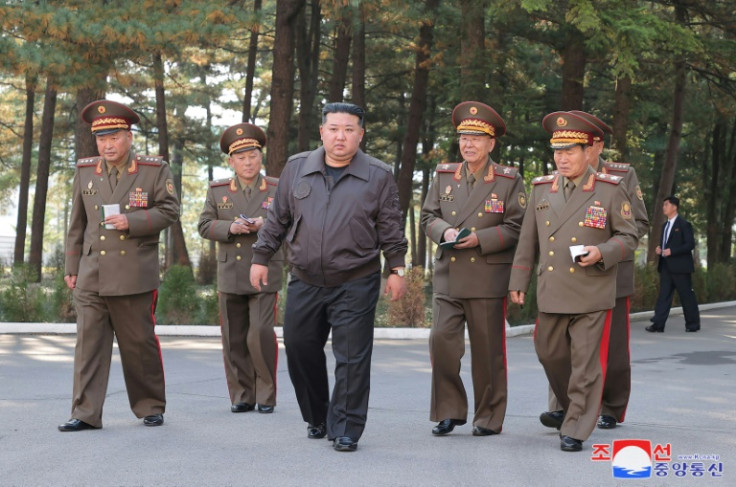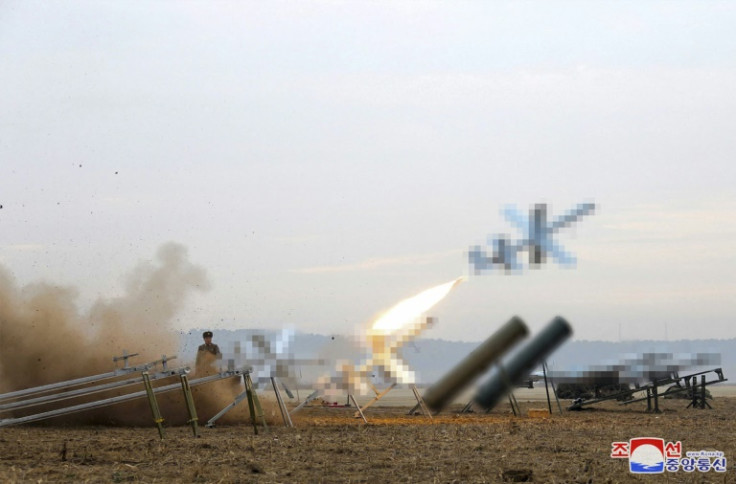N. Korean Leader Orders 'Mass Production' Of Attack Drones

North Korean leader Kim Jong Un has ordered the "mass production" of attack drones, state media reported Friday, as concerns mount over the country's deepening military cooperation with Russia.
Pyongyang first unveiled its attack drones in August, with experts saying the capability may be attributable to the country's budding alliance with Russia.
The nuclear-armed country has ratified a landmark defense pact with Moscow and is accused of deploying thousands of troops to Russia to support its war in Ukraine, prompting South Korean President Yoon Suk Yeol to warn about the potential transfer of sensitive Russian military technology to North Korea.
Kim on Thursday oversaw the tests of drones designed to hit both land and sea targets, produced by North Korea's Unmanned Aerial Technology Complex, the Korean Central News Agency (KCNA) said.
"He underscored the need to build a serial production system as early as possible and go into full-scale mass production," KCNA said.
The unmanned drones are designed to carry explosives and be deliberately crashed into enemy targets, effectively acting as guided missiles.
Thursday's test saw the drones "precisely" hit targets after flying along predetermined paths, KCNA reported.
"The suicide attack drones to be used within different striking ranges are to perform a mission to precisely attack any enemy targets on the ground and in the sea," the agency said.
Kim said the drones were an "easy to use... component of striking power" due to their relatively low production cost and expansive range of applications, according to KCNA.
He said the North had "recently attached importance" to developing unmanned hardware systems and to integrating them with the country's overall military strategy.
Experts said the drones -- in images released by state media in August -- looked similar to the Israeli-made "HAROP" drone, Russian-made "Lancet-3" and Israeli "HERO 30".
North Korea may have acquired these technologies from Russia, which in turn likely obtained them from Iran -- with Tehran itself suspected of accessing them through hacking or theft from Israel.
In 2022, Pyongyang sent drones across the border that Seoul's military was unable to shoot down, saying they were too small.
This year, North Korea has been bombarding the South with trash-carrying balloons, in what it calls retaliation for activists in the South floating anti-regime propaganda missives northwards.
The North has also accused Seoul of violating its sovereignty by flying drones over its capital Pyongyang to drop propaganda leaflets.
By mentioning the "production and practical deployment of various drones", North Korea may be hinting it could follow suit, Yang Moo-jin, president of the University of North Korean Studies in Seoul, told AFP.
Pyongyang could be "suggesting the possibility of using balloons to disseminate leaflets to the South with such drones," Yang said.
"Considering the effectiveness of drone attacks observed in the war in Ukraine, they could also be effectively utilised in the ongoing conflict there," he added.
South Korea launched a drone operation command last year to better address the growing threat.
In October, the North amended its constitution to define South Korea as a "hostile" state, an illustration of a sharp deterioration in ties since Kim in January declared Seoul his country's "principal enemy".
The North has continued to carry out UN sanctions-defying ballistic missile tests, and last month blew up its roads and railways linking it to the South.


© Copyright AFP 2025. All rights reserved.





















